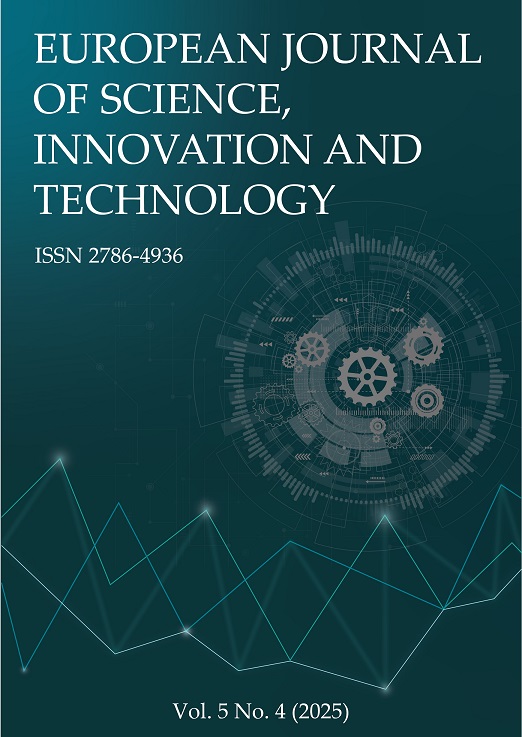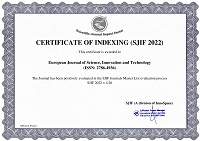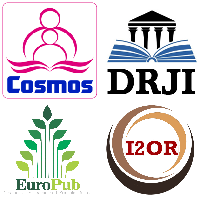Vulnerability of Medicinal Plants Used in the Treatment of Sexual Weaknesses among the Ngengele of Tchambi, Maniema (DR Congo)
Abstract
The use of medicinal plants to treat sexual weaknesses remains common among the Ngengele communities of Tchambi (Maniema Province, DR Congo). However, the intensive exploitation of roots, bark, and other organs threatens the survival of many species. This study aimed to inventory the locally used aphrodisiac plants and to assess their degree of vulnerability. Ethnobotanical surveys were conducted with 80 traditional healers (32 women and 48 men) across ten villages. A vulnerability index (IVi), based on nine ecological and ethnobotanical parameters, was calculated. A total of 26 species belonging to 15 families were recorded. Among them, 65% were classified as highly vulnerable, including Millettia elskensii (IVi = 2.9), and 35% as moderately vulnerable. The dominant use of bark and roots (59% of reported uses) places significant pressure on natural regeneration. These findings confirm that current management practices are unsustainable and highlight the urgent need for awareness raising, domestication, and participatory conservation strategies.
References
Akpagana, K. (1992). Some rare or endangered species of Togo. I – The coastal strip. Annales de l’Université du Bénin, 10: 33–36.
Amoussou, E., Camberlin, P., Mahé, G. (2012). Impact of climate variability and the Nangbéto dam on the hydrology of the Mono-Couffo system (West Africa). Hydrological Sciences Journal, 57(2): 1–13.
Asse, A., Otenge-Yeboah, A., Odamtten, G., & Simmonds, S. (2005). Ethnobotanical study of some Ghanaian anti-malarial plants. Journal of Ethnopharmacology, 99(2): 273–279.
Atakpama, W. (2021). Plants and the management of maternal health in the Maritime Region of Togo. African Annals of Medicine, 14(3): e4196–e4206.
Badjare, B., Woegan, Y.A., Folega, F., Atakpama, W., Wala, K., & Akpagana, K. (2021). Vulnerability of woody resources in relation to different forms of use in Togo: the case of the Doungh-fossé aux lions protected landscape (Savanes Region). Agrobiologia Review, 11(2): 2552–2565.
Banyanga, (2014). Indigenous knowledge on ethnobotanical plants of Kavrepalanchowk District. Journal of Science, Engineering and Technology, 5: 96–109.
Betti, J. (2001). Vulnerability of plants used as antimalarials in the Mintom district, south of the Dja Biosphere Reserve (Cameroon). Laboratory of Systematic Botany and Phytosociology, Université Libre de Bruxelles, Belgium & Ministry of Environment and Forests, Yaoundé, Cameroon.
Brossard, B. (2019). Considering age in qualitative methods: an attempt at clarification. SociologieS [Online], Research experiments: Rethinking social age relations between respondents and researchers, 1–11.
Diafouka, A. (1997). Analysis of the uses of medicinal plants in four regions of Congo-Brazzaville. PhD Thesis, Université Libre de Bruxelles, 434 pp.
Djègo, J., & Oumorou, M. (2009). Understorey phytosociology and the impact of forest plantations on floristic diversity in the Lama Forest Reserve. Annales des Sciences Agronomiques, 12(1). https://doi.org/10.4314/asab.v12i1.53834
Gadikou, J., Atakpama, W., Egbelou, H., Kombate, B., Batawila, K., & Akpagana, K. (2022). Use-value of vulnerable medicinal plants in the Maritime Region of Togo. Revue Agrobiologia, 12(2): 3009–3023.
McCartan, S.A., & Crouch, N.R. (1998). In vitro culture of Mondia whitei (Periplocaceae), a threatened Zululand medicinal plant. South African Journal of Botany, 64: 313–314.
Moyabi, A.G.A., Coulibaly, F.A., Konan, Y.A.O., Kouakou, D.K.R., & Koné, M.W. (2021). Medicinal plants used in the treatment of couple infertility in the Oumé Department, Central-West Côte d’Ivoire. Afrique Science, 19(6): 133–145.
N’Sanda, L., Vivi, K., Akilimali, C., Kabala, K., Tabu, O., Omasombo, J., & M’pene, Z. (2011). Maniema: Space and Lives. Brussels: Le Cri Éditions. ISBN 978-2-8710-6562-3, pp. 136–137.
Nga, E., Kidik Pouka, C., Ngo Boumsong, P.C., Dibong, S.D., & Mpondo, E. (2016). Inventory and characterisation of medicinal plants used in therapeutics in the Sanaga Maritime Department: Ndom, Ngambe and Pouma. Journal of Applied Biosciences, 106(1): 10333–10352.
Ngbolua, K.N., Mihigo, S.O., Liyongo, C.I., Ashande, M.C., Tshibangu, D.S.T., Zoawe, B.G., Baholy, R., Fatiany, P.R., & Mpiana, P.T. (2022). Ethnobotanical survey of plant species used in traditional medicine in Kinshasa city (Democratic Republic of the Congo). Tropical Plant Research, 3(2): 413–427.
Nzuki, F., Termote, C., Kibungu Kembelo, A., & Van Damme, P. (2013). Identification and local importance of medicinal plants used in the Mbanza-Ngungu area, DR Congo. Bois et Forêts des Tropiques, 316: 63–77.
Ouattara, R., Zerbo, P., Ouattara, A., Sourabie, S., & Boussim, J. (2023). Indigenous knowledge of plants used in the management of reproductive disorders in the Sudanian zone of Burkina Faso. Journal of Animal & Plant Sciences, 56(3): 10364–10377.
PDL, 2021. Local Development Plan of the Bangengele Chiefdom 2021–2025.
Raimondo, D., Von Staden, L., & Foden, W. (Eds.) (2009). Red List of South African Plants. Strelitzia 25. Pretoria: SANBI.
Yessoufou, K. (2005). Ethnobotanical and ecological research on two fruit species in the Plateau Department, southern Benin: Irvingia gabonensis (Aubry-Lecomte ex O’Rorke) Baill. and Blighia sapida K. König. MSc Thesis, AGRN FSA UAC, Benin, 67 pp.
Zerbo, P., Millogo, J., Odille, G., Nacoulma-Ouedraogo, O., & Van Damme, P. (2011). Medicinal plants and medical practices in Burkina Faso: the case of the Sanan. Bois et Forêts des Tropiques, 307(1): 41–53.
Copyright (c) 2025 Hilaire USSENI NASIBU, Dan KAPOLI OMBA, Augustin YAKAYENGO TOKO, Pierre YUMA MADJALIWA, Christophe LOMBA BOSOMBO, Hippolyte NSHIMBA SEYA

This work is licensed under a Creative Commons Attribution 4.0 International License.


 ISSN
ISSN 











